When Sue was interviewed by Steve for a position in his company, she liked him a lot. He was warm, charming and when offered the job appreciated his promise to help her find her feet as she settled in.
But over the ensuing weeks and months, she became less sure about Steve and his motives.
He was very open about his goals for where he wanted to take the company. Sue admired his enthusiasm and passion. She was happy with her lot and really enjoying her new position.
They often had to work closely together. Sue was keen to impress and put in a lot of hard work and effort but was a bit mystified as to how Steve never seemed to be around at the critical times, missed some important meetings and appeared vague when she sought answers to specific questions.
Her gut was telling her something wasn’t right, but she was busy and there was nothing obvious calling out a red flag.
While putting the finishing touches to a proposal about to be sent out to a major client, she noticed some of the data entered had been changed. She knew because she’d spent a long time tabulating the information.
The new figures significantly skewed the forecasted outcome.
Concerned, she drew Steve’s attention to the fact the data was wrong.
He brushed off her concerns saying “There’s nothing wrong with the data. You don’t want to cause a delay or lose the company this important client, do you?”
Trust.
It’s the foundation of every relationship in work and life. When present, it fosters loyalty and motivates the desire to contribute to sustaining that relationship. It creates a sense of belonging; we feel we’re in the right place with the right person(s) and we feel happy.
Building trust starts in a moment. That first impression counts for a lot. A warm open smile indicates we are not a threat. This is important as our brain’s primary objective is “safety first!”
Though con artists make it hard for us. They are highly skilled at projecting trust until as Sue found out, they reveal their true colours.
Oxytocin is our trust hormone that leads to the creation of social bonds.
It’s enhanced by eye contact, which is why in our culture at least we prefer to be with those people who will look us in the eye.
It’s also enhanced by appropriate physical contact; a handshake, reassuring pat on the shoulder, hi-five or a hug.
Trust builds in small increments. Brene Brown describes it like adding additional marbles of trust to a glass jar every time the other person demonstrates their trustworthiness.
Sue initially thought she could trust Steve. But the marbles weren’t being added to her trust jar and her intuition was starting to tell her something was wrong.
Our intuition is a “knowing.” It’s a subconscious appraisal of a situation or person. It’s typically fast and automatic.
When we talk about trusting our gut, it’s not our gut itself, but the brain making the appraisal that manifests as that visceral unease.
Sue was unsure why she felt this. She liked Steve as a person and her conscious analysis of him and his behaviour led her to think she had no evidence to believe differently. She was conflicted and because she was under time pressure less able to tap into the mind space required to examine the situation more closely.
Some say we should just go with our gut feeling. Others that we should only work with our logic and reasoning. There’s a place for both because they operate concurrently. The route we follow is the one we take the most notice of.
When you’re introduced to someone and your gut is screaming “this person is creeping me out!” it’s much easier to decide whether you are interested in developing a working relationship with this person or not.
In Sue’s case, her internal system was hinting something was wrong, but her conscious brain was demanding proof.
It was only when his deceit was uncovered, she realised she’d been duped. Her intuition and conscious analysis were now in agreement. Steve was a fake, interested only in own advancement and more than happy to use Sue to get him to his goal.
She knew she couldn’t work with someone whole values didn’t align with hers. She handed in her resignation to seek other opportunities elsewhere.
Trust matters. Without it, we have no reason to remain in that relationship.
Which is why, in our fast-paced world, it’s vital you:
- Tap into your values to ensure they align with the organisation you work for. If there’s a mismatch it’s time to go.
- Tune into your gut. It may not be right every time, but it’s often worthy of checking and the more we practice at listening, the better and more discerning we become. It helps to keep us safe from unhealthy or toxic relationships and can be useful if you’re prone to overthink things.
Mind you, not every decision you make warrants a 50-page document weighing up all the pros and cons. Studies have shown that snap decision on your dream home is the one you’ll be happiest with, in the longer term, though you may prefer to do your homework when looking at buying a new washing machine. - Keep an eye on your trust jar. We are far from perfect and sometimes as humans we stuff up. We make a mistake, say the wrong thing or hurt another person’s feelings. Here it’s about keeping things in perspective. Being genuine in an apology, taking responsibility for getting things wrong and taking steps to rectify the situation may cost you a couple of marbles, but may not cost you the relationship.
But repeat offenders take note: you may be forgiven the first couple of times, but unless you can demonstrate a consistent change in behaviour to be more trustworthy, you’ll lose out as patience wears thin. - Show consistency in your observable behaviours and good emotional regulation. This is harder if you’re feeling under a lot of pressure because it narrows your mental bandwidth to cope with the extra mental strain. Being open to share and acknowledge that you might not be your best shiny self in these circumstances helps everyone to show you a little compassion, perhaps offer to help out to lighten your cognitive load and safeguard your precious relationships.
Who do you trust?
How do you keep your trust jar topped up?
I’d love to hear your thoughts.


